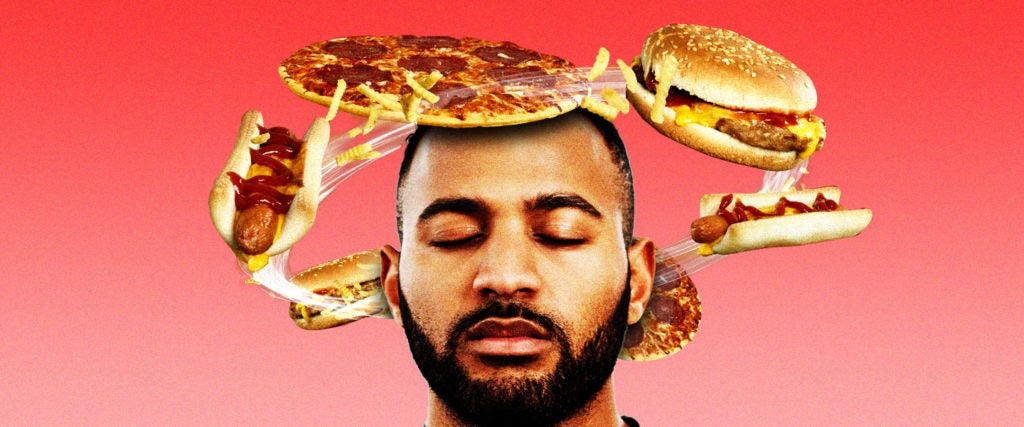My girlfriend and I started celebrating Takeout Fridays during quarantine, an attempt at supporting small businesses and keeping morale high. But despite looking forward to takeout all week, every week, when Friday finally comes around, our minds go blank. There are too many good options, and landing on just one, no matter how eager we are, feels inconceivable.
I got 99 problems and choosing what I want for dinner is one. #UnsungJayZLyrics
— Katie Krause #BlackLivesMatter (@Katie_Krause) July 18, 2013
The hardest choice in life is actually choosing what you want for dinner every night
— Thomas (@tommy_tde) March 7, 2020
This is no doubt a common problem: The internet is peppered with “What Do I Want For Dinner?” quizzes, and there are websites dedicated entirely to helping uncertain diners make dinner decisions, such as the Wheel of Dinner or What the Fuck Should I Make for Dinner?
And while these tools can be helpful, they often do the choosing for you, rather than helping you figure out what you really want deep down. For that, I turned to food-focused hypnotist Lori Hammond and psychologist Glenn Livingston, author of Never Binge Again. These are their recommendations.
Change the Way You Talk About Food
Rather than fumbling through your options and shouting, “I don’t know what sounds good,” Hammond suggests asking yourself, “What if it was really easy to know exactly what I’m craving most?” As she explains, “Your unconscious mind loves questions, and a question like this sends it searching for the most enticing options.” Getting frustrated and berating yourself for struggling with a simple decision, meanwhile, “literally blocks you from tuning into your cravings.”
Use Your Imagination
Instead of scrolling through Yelp, try closing your eyes and putting your mind to work. “Consider the different options, and imagine choosing each one, one at a time,” Hammond advises. “Imagine the end of the meal. How do you feel? Are you satisfied? By mentally rehearsing each option, you can follow the feeling of contentment or dissatisfaction to know if that’s the best choice for you.”
Stop With the ‘Shoulds’
“Some people struggle to notice their true cravings because they’re used to feeling guilty about indulging in ‘forbidden’ foods,” says Hammond. “My experience has shown that when people release food rules, it allows them to notice that their body sometimes craves wholesome, healthy foods over refined, sugary foods.” And even if your body tells you it wants a cheeseburger, splurging on the occasional Takeout Friday is just fine, too.
If You’re Stuck on the Same, Unhealthy Option, Do Some Soul Searching
“What I do with clients sometimes is ask if they’d be willing to forestall making a decision while we discuss their deepest cravings,” Livingston explains. “Perhaps they’re craving pizza. I’d then ask them to discuss their fondest memories of eating pizza. For example, I know a guy who was craving pizza at the strongest level, almost like it was a matter of survival. When I asked what his fondest memories of eating pizza were, he immediately went back to being with his sister and his grandfather at a pizza place in New York City.”
“I’d ask the client to bring the memories back in a vivid way, going over them detail by detail,” Livingston continues. “What would your grandfather wear? What did he look like? How big was the pizza place? Then, I’d ask my client how else they might be able to hold onto those memories if they didn’t actually eat pizza. Perhaps they could look through pictures and old tape recordings of their grandfather. Perhaps they could call their sister and reminisce. The idea is to give the client the message that pizza isn’t the only way to access those fond feelings. This removes the psychological pressure to eat the pizza.”
With a fresh plate, you can start the process of making a different decision. “Finally, I’d explore the pizza by categories and look for healthier substitutes,” Livingston says. “For example, pizza is starchy, cheesy and salty. So, what other starchy options are there that might be healthier? The client might say brown rice or potatoes. And what else tastes cheesy, but would be healthier? The client might say low-fat cheese, or even nutritional yeast. And what else is salty like tomato sauce, but might be healthier? The client might say they could blend up some tomatoes, lemons and maybe just a little bit of soy sauce and nutritional yeast in a blender. So, the client would have a substitute for the taste and texture they were craving, and a way to hold onto the nice memories, but wind up eating something much healthier for dinner.”
Of course, you can use this technique when thinking through takeout options, too, not necessarily to end up with something healthier, but something different. For example, you may crave the meatiness of a McDonald’s hamburger, something you order on most Takeout Fridays. So, you could ask yourself, what other meaty options are out there that would satisfy the same craving? How about a carne asada burrito? Or a gyro sandwich?
You get the point.
And Finally, Save the Best Bite for… First?
“When you do eat, always eat the best bites first,” Hammond says. “Saving the best for last is an obsolete idea that leads to extra food consumption. If you’re craving cheesecake, have it at the start of your meal. Close your eyes, and feel the cheesecake in your mouth. Really taste it. Tell yourself, ‘I’m so easily satisfied.’ You may just find yourself content with a bite or two, then you can enjoy the main course without wolfing it down in anticipation of the cheesecake to come. Science underscores the effectiveness of this technique, because your taste buds are most sensitive to food pleasure at the start of a meal. You taste food less as you become physically full.”
Now get out there and make a decision about dinner tonight.

